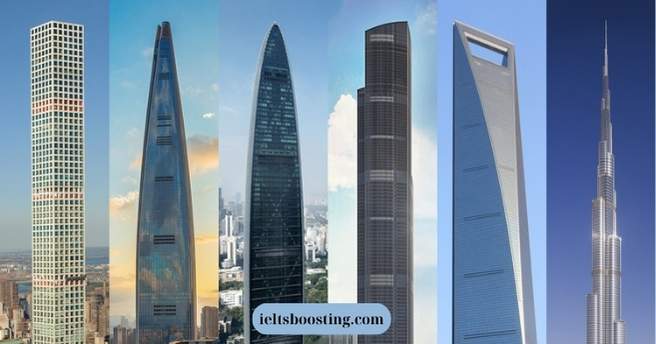Some cities create housing for their growing population by providing taller buildings. Other cities create housing by building on wider areas of land. Which solution is better?
It is true that national and local authorities have implemented different strategies to address the growing demand for housing. Some opt for constructing towering apartment complexes, whereas others advocate for the outward expansion of urban areas. In my opinion, there is no one-size-fits-all solution and it depends on the city.
It is undeniable that there are certain advantages to constructing towering blocks. Vertical apartments can accommodate many residents, potentially lowering rent and housing costs. This approach is particularly beneficial in cities with limited land availability, such as New York or Tokyo. Vertical housing not only saves land resources but also allows for the centralization of amenities and services, making them more accessible to residents. However, this style of living may lack personal outdoor space and can sometimes lead to feelings of congestion and a lack of privacy.
On the other hand, horizontal development, typically seen in cities with ample land availability or lower population densities, offers considerable benefits. This style offers residents more living space, often including gardens and backyards. It promotes a more private and quieter lifestyle, which can be particularly appealing for families. The drawbacks, however, include potentially longer commutes and the necessity for more infrastructure development, such as roads and utilities, which can be more expensive and environmentally taxing.
In conclusion, there is no definitive answer to which housing solution is better. Vertical housing is more suited to densely populated urban areas where land is scarce, while horizontal development is preferable in less densely populated areas, providing more space and privacy. Ultimately, the decision regarding the housing strategy should be based on the unique demographic, geographic, and economic conditions of each city.
Explore more:
ielts speaking part 2

Some cities create housing for their growing population by providing taller buildings
Good lexical resource
- One-size-fits-all: A phrase used to describe a solution or approach that is considered suitable for a wide range of situations or problems, implying a lack of specificity or customization.
- Towering: This adjective describes something as very tall or high, often impressively so. In the context of your essay, it refers to very high apartment buildings.
- Advocate: As a verb, it means to support or recommend a particular cause or policy. In your essay, it is used to describe the promotion of urban expansion.
- Centralization: The process of concentrating activities or facilities in a central location. In the essay, it refers to the idea of having amenities and services located in a central area for easier access.
- Congestion: Overcrowding or clogging, often used to describe high-density urban areas where there is a lot of traffic or people.
- Ample: Enough or more than enough; plentiful. In your essay, it is used to describe the availability of land.
- Infrastructure: The basic physical and organizational structures and facilities needed for the operation of a society, such as buildings, roads, and power supplies.
- Demographic: Relating to the structure of populations, often used to discuss characteristics like age, race, or gender of a population.
- Geographic: Pertaining to the natural features, population, industries, etc., of a region.
- Economically taxing: Referring to something that is financially burdensome or expensive.
Some cities create housing for their growing population by providing taller buildings


